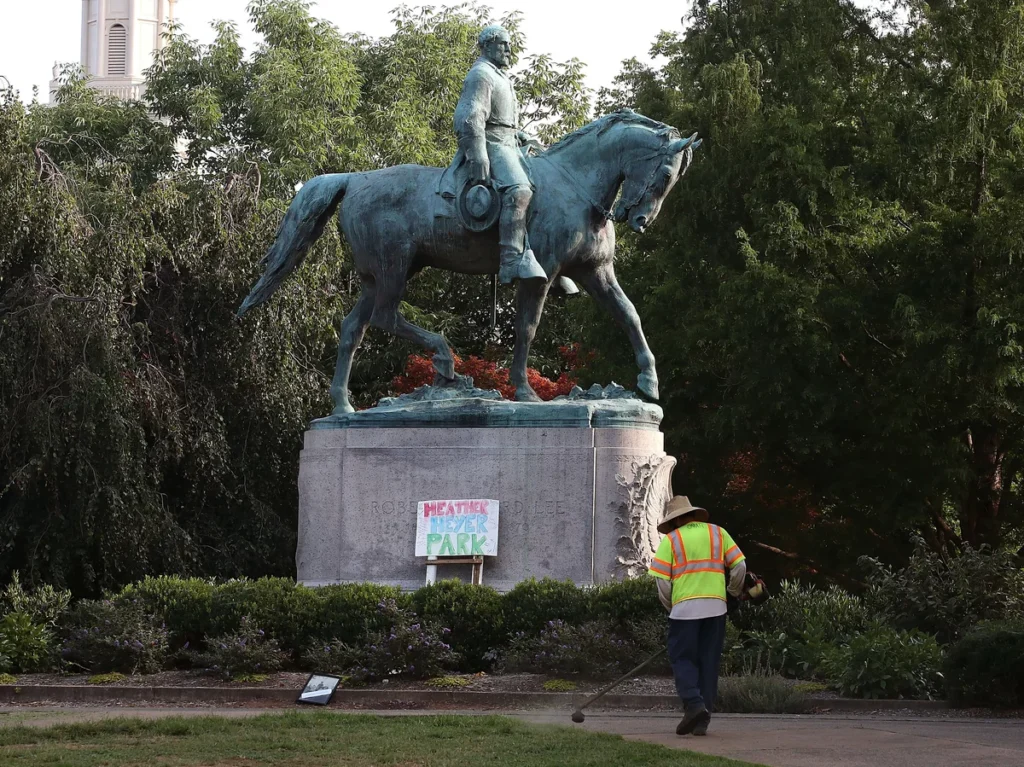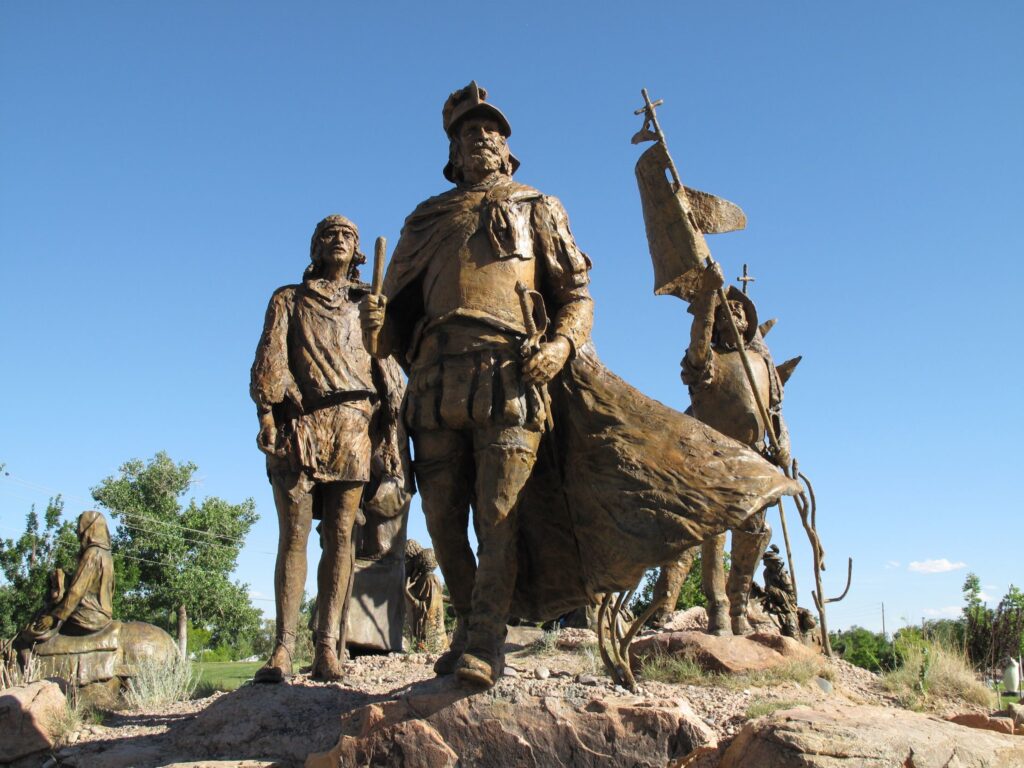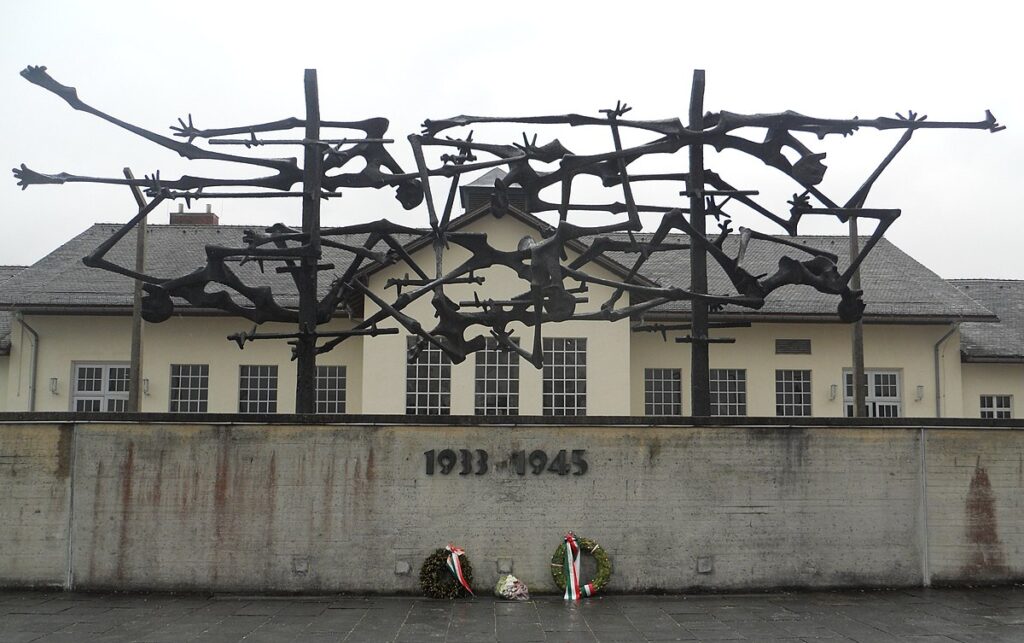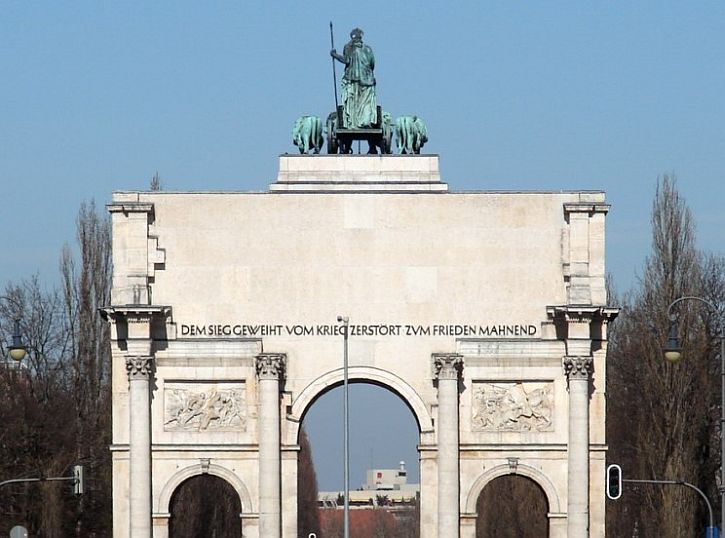What do you think of when you hear the word monument? A man on a horse, a soldier, maybe an arch or an obelisk with a long inscription about the historic heroic acts of your countrymen, decades or centuries ago? The intent seems to be to honor and celebrate these figures and their acts of bravery. And this is where we get into trouble. Although heroes to some, to others they may represent oppression, injustice, and worse.

How do we deal with the darker side of these monumental figures? The statue of Confederate General Robert E. Lee, astride his horse Traveler, in Charlottesville, VA, was recently removed and melted down in a secret location. The community and leadership struggled for years over its disposition, making the difficult decision to repurpose the massive bronze monument and create a new piece of public art appropriate for the city.
In New Mexico, monuments to the Spanish conquistadors have come under attack from Indigenous groups who suffered at the hands of these colonizers. Yet many New Mexicans today, descendants of these settlers, are proud of their heritage and take attacks on the monuments personally. Violence has erupted in the last few years as protesters demanding removal and those fiercely defending their legacy clash. As in Charlottesville, one side sees ancestors who were heroic; for others the same history is one of oppression and pain.

I learned a fascinating fact about the German language that may be a key to living with monuments. There are three different words in German for “monument.” There is no single word, as there is in English, and the three German words have no English equivalents. These words include intent and offer guidance for the viewer about how to relate to a particular statue, monument or memorial. See this link for more: https://americangerman.institute/2022/04/language-of-remembrance/
- Ehren means to honor, and an ehrenmal defines a monument that honors a historical event. For example, the Sowjetisches Ehrenmal (Soviet Memorial) in Berlin “honors” the Soviet soldiers who fought and died in the Battle of Berlin in 1945.
- Denken means to think, and a Denkmal is a monument or memorial that acknowledges something that happened in the past and promotes thinking or reflection. There are Denkmal for Bismarck, Goethe, Wagner and other significant figures in German history. The Denkmal für die ermordeten Juden Europas (Memorial for the Murdered Jews of Europe) in Berlin recognizes the millions of Jews murdered by the Nazis during the Holocaust. It serves to remember the Jews who were murdered rather than the actual acts and events that caused their deaths.
- Mahnen means to admonish, and a Mahnmal not only acknowledges horrific events and atrocities but serves to admonish them. The Internationales Mahnmal (International Monument) at the Dachau Concentration Camp (below) is a site intended to condemn the atrocities that occurred there and ensure they do not happen again.
So, if you are going to visit an Ehrenmal, be ready to celebrate heroic feats of the past, like the liberation of a country. A Denkmal will ask you to reflect or think about the subject of the monument. And with a Mahnmal, you are prepared to be reminded of a horrific event that should not be repeated.
What if English had three – or more? – equivalent words to describe monuments and memorials? At least we would all understand the intent and the message of each site we visited. Visiting the Manassas Battlefield National Park would be “this was horrific, let’s not do it again.” A visit to the Sand Creek Massacre National Historic Site would be “mourning those we slaughtered.” Robert E. Lee or the conquistador would be “see through different lenses.” Viewers would understand that theirs is not the only perspective and to be respectful of the other. (OK, I’m a dreamer.)
And one last image from Germany. The Siegestor (Victory Gate) in Munich was erected in 1852 to honor the Bavarian army’s victories over their neighbors. The monument was scheduled for demolition after being badly damaged in World War II, but instead it was reconstructed, with an update to the original flowery inscription. The new language on one side of the monument reads simply “Dedicated to Victory, Destroyed by War, Urging Peace.” There may be ways to revise and update our monuments to give a more appropriate message for today.



This would be a great piece for the New Mexican! Thank you for such a thoughtful reflection on monuments
Many thanks, Charlene. I appreciate the vote of confidence. I may rework it a little and see if it works for the paper.
It made me sick to think that the Robert E Lee bronze was melted down and not stored until it could be repurposed even taking years to do it. That is no different than Notzie Germany burning books to me. I am an artist and restorer and collector of both sides of history without judgement.
Hi John, and thanks for the comment. I think I understand what you’re saying. I’m no fan of Robert E. Lee, but I saw a photo of the melting of his head, and was surprisingly sad. I had the same reaction when the statue of Saddam Hussein was pulled down when we invaded Iraq. No fan of him either, but the image was disturbing to me. And you’re seeing it through the eyes of an artist and restorer, so I can imagine that is another layer. I can be very judgemental about historical figures, so I’m not quite sure why I have a certain loyalty (?) to their representations… you got me thinking, and I thank you for that!
Lucy, this is remarkable, very interesting, and potentially useful.
It is too bad that these helpful words are in German, but this raises another additional interesting point about the importance of words: how there are some words in German (and other languages) that have no equivalence in English.
Yes, words matter and in this case could be transformative.
Thank you, Keith. Love your riff on language. I think I remember that in Navajo dootł’izh means blue, green and turquoise, but they have very elaborate verbs for coming and going. You don’t just go to Gallup. The verb might include a lot of information like are you going alone, when are you coming back, are you going on a horse, etc. Traveling around was a big deal for traditional Navajos. And for Germans… remembering and learning from history seem to be a high priority. I admire them for that.
Wonderful piece, Lucy! Yes, please send it to the New Mexican! It certainly helped broaden my thinking about monuments.
Have you read the Proclamation the City issued on September 7, 2018 about the Entrada? It is well worth googling. It is very beautiful. Signed by the President of Los Caballeros de Vargas, the past president of Los Caballeros, the President of the Fiesta Council, the chairman of the All Pueblo Council of Governors, the Mayor of Santa Fe, and the Archbishop of Santa Fe.
Thank you, Mary Ellen, and so good to hear from you. And yes, I did read the proclamation when it came out, but it’s a great idea to take another look at it… a lot has happened in 6 years! I admired Regis Pecos’ work in bringing together the Fiesta Council, All Pueblo Council of Governors, the Archbishop, Mayor and others. He is a very special mediator, and human being.
Hi Lucy, thanks so much for your insight on this difficult issue. I think the approach you describe makes alot of sense. Hope you are well!
Good to hear from you, Rolf, and thanks for the affirmation. All is well here, and hope it is with you and yours, too. We’re headed to the eclipse in a few days!